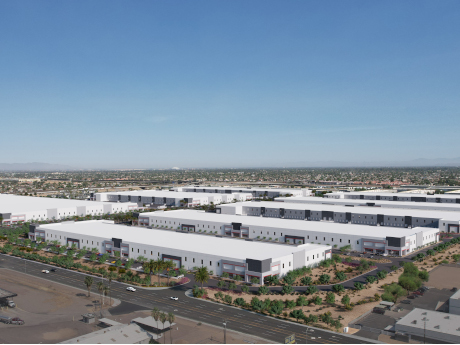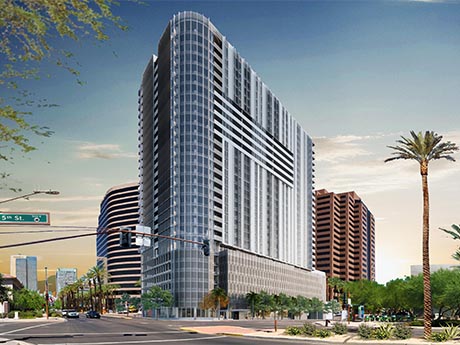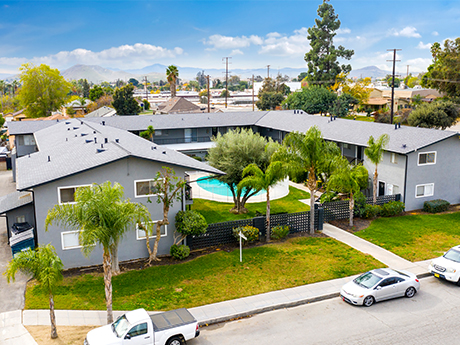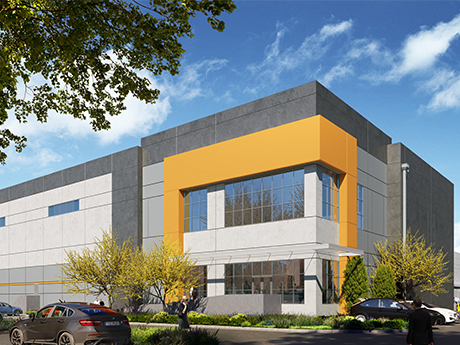By Garrett McClelland, Vice President, JLL With a global pandemic still in flux, strong demand for Orange County industrial remained constant throughout 2021. As we start the New Year, signs of a slowdown are nowhere in sight. Orange County’s overall vacancy was at 2 percent last quarter, which ranks among the lowest nationally. Demand continues to outpace supply — with limited inventory bringing the vacancy rate down and driving rents to historic highs. With very few viable options, tenants are forced to settle for anything that will satisfy their needs, or renew. Given this, developers have gotten creative to find solutions and build new industrial product in primary submarkets. The primary target for industrial developers in Orange County has been Class B and C office buildings located on industrial-zoned parcels. For example, Duke Realty recently bought a primarily vacant 100,000-plus-square-foot office building in Brea. The building is situated on 5.8 acres and is planned for a new modern warehouse industrial facility. According to JLL Research, out of the 12 conversion projects announced last year, nine were office to industrial. This shouldn’t come as a surprise as we’ve seen rapid rent growth in the industrial sector over the past 24 months. This has made office-to-industrial …
Western Market Reports
By Pat Harlan, Managing Director, JLL Labor, geography, population growth and a steady stream of cost-effective, “speed to market” solutions make Phoenix one of the most dynamic industrial markets in the country. Based on existing fundamentals, 2022 is on track to be another record year. As of third-quarter 2021, Phoenix had landed just under 16 million square feet of net leasing year-to-date. Absorption had improved by more than 28.5 percent in the same 12-month period, to total 8.5 million square feet. Nearly 94 percent of that activity was generated from ecommerce and food and beverage users. Vacancy had also dipped to pre-pandemic levels, falling by 100 basis points year-over-year to just 6.8 percent as of the end of the third quarter of 2021. Construction continues to ramp up, trying to meet a seemingly unending stream of demand. As of the end of the third quarter, there was 16.6 million square feet of metro Phoenix industrial space under development. The West Valley accounts for about 11.3 million square feet of this activity. The Southeast Valley represents an additional 3.4 million square feet. Two of the largest buildings underway in the market right now are the Cubes Glendale, totaling 1.2 million square feet, and Building …
By Mark McAdams, Vice President, JLL While the Inland Empire is more well-known for its industrial real estate, the region’s office market has continued with its own success and stability pre- and post-COVID. As employees of office buildings seek refuge from high home prices in neighboring Los Angeles and Orange counties, occupiers equally appreciate the accommodating office rental rates while supporting their employee’s draw to the region. The current office market is in nearly the same place it was at the end of the first quarter of 2020 when COVID appeared on the scene. The overall market vacancy rate stands at 7.8 percent. Some of the submarkets have lower vacancies today than in the first quarter of 2020. Some smaller submarkets have seen even lower vacancy rates down to unprecedented levels at 3 percent to 5 percent. Only one submarket, San Bernardino, has a double-digit vacancy rate at 12.6 percent, and that is still considered healthy. Anything sub-10 percent is generally considered a landlord’s market. These are historically low vacancy rates that have rarely been seen since the area started developing the bulk of its office inventory in the mid-1980s. The pandemic put a hold on rental rate increases that had …
Orange County’s Multifamily Market Stays Strong as New Inventory May Curb the Supply-Demand Imbalance
by Jeff Shaw
By Peter Hauser, Principal, Avison Young The Orange County multifamily sector is extremely strong. Rents continue on a positive upward trend and occupancies remain very high, hovering around 97 percent. It is unquestionably a landlord’s market. Many years of supply constrained NIMBY-ism that created the lack of new construction is coming to an end, however. The California governor has mandated that cities approve quality residential developments with the goal of increasing density and combatting the significant housing shortage. There are currently 6,800 new multifamily units in the process of being delivered. While there are projects in the majority of cities, Irvine, Anaheim, Orange and Santa Ana are seeing the most development activity. Some very active Orange County developers include Trammel Crow Residential, Alliance, the Irvine Company, Western National Group, JPI, Wermers Companies, Avalon, Fairfield, Shopoff Realty and Garden Communities. Alliance Residential is nearly complete on its 1,221-unit Park & Paseo in Santa Ana, near the border of the master-planned Tustin Legacy community. Wermers Companies is also in the process of finishing the 603-unit Elan, located less than a mile from downtown Santa Ana near the intersection of the 55 and 5 freeways. The 653-unit Avalon Brea Place is starting to …
By Phil Breidenbach, Senior Executive Vice President, Colliers Companies are coming back to the office in Phoenix. Businesses are envisioning the return of their workforce as many look for new space or reconfigure their existing facilities. Building owners feel the momentum. We have reason to be optimistic — the future of the office and how we use the workplace is exciting! Getting there, however, will be turbulent. Your patience may be tested. Colliers’ fourth-quarter office report shows vacancies stabilizing market wide, positive absorption occurring in key submarkets and rents increasing marginally. Positive fourth-quarter absorption was led by leasing in new Class A+ buildings like 100 S. Mill. This Hines/Cousins project is 80 percent leased by institutional, “household name” tenants at record rents several months prior to completion. Vacancy rates may, however, continue to fluctuate as certain downsizing continues. Some institutional users are adopting work from home for much of their workforce, convinced this strategy will help with employee retention and cost reduction without impacting productivity — assumptions yet to be proven. This strategy has corporate America subleasing space, allowing leases to expire and vacating spaces, which is stagnating recovery. ‘Short Term’ — The Renewal Mantra for 2022 We speak with office occupiers regularly about back-to-work strategies. …
By Steve Nosrat, Principal, Avison Young As we prepare to close out 2021, Las Vegas continues to thrive, maintaining its place as one of the fastest-growing multifamily markets in the nation. Clark County’s population grew by 2 percent — nearly 40,000 — ranking it among the top 10 metros with at least 750,000 residents. This has further increased the already high demand for multifamily properties. Annual job growth in Las Vegas has outperformed the national average for five straight months, with leisure and hospitality jobs driving most of the recovery. Housing demand and rents are hitting all-time highs all over the Valley. Home values have risen 23 percent annually, and apartment rents are up 22 percent. Vacancy rates are down to just 3.8 percent, compared to the national index of 4.5 percent. This has spurred investors on, causing them to feel more secure with Las Vegas’ long-term outlook. Apartment sales passed $1 billion in the second quarter of 2021, which has only happened twice before in Las Vegas history. The 12-month sales volume has passed $3.1 billion and is trending positively for 2022, according to CoStar. The apartment market gained significant momentum during the third quarter. Cap rates have compressed, and …
By Matt Pesch, Vice Chairman, CBRE The multifamily market in Phoenix experienced a record-setting year in 2021. Market vacancy dropped below 3 percent for the first time, the region led all U.S. metros in year-over-year rent growth for every quarter and total multifamily investment sales volume topped $12 billion. This was nearly double the volume from 2019 and a 125 percent jump from 2020. These metrics are driven by Phoenix’s primary economic drivers of nation-leading population and job growth. As of October, Phoenix was one of only four U.S. metros to recover 100 percent of the jobs the region lost during the pandemic. This was driven by the stable recovery of long-established industries and growing sectors that are diversifying the region’s employment base. Case in point: Phoenix is home to one of the fastest-growing biotech sectors in the U.S. with the life sciences workforce expanding by 8.5 percent from 2019 to 2020, according to CBRE’s latest research. Likewise, large corporate office users continue to relocate or expand in Phoenix at an unprecedented rate, further driving the region’s robust employment recovery. The area’s strong employment recovery and population growth are the fuel driving Phoenix’s multifamily sector. The gains in the apartment …
Institutional Money, Private Investors Continue to Flock to Inland Empire Multifamily Market
by Jeff Shaw
By Eric Chen, Senior Vice President, CBRE Multifamily has been a well-performing real estate segment during the past 18 months as demand for housing continues to trump supply in most of California. The Inland Empire has been the recipient of much of this demand within the Greater Los Angeles and Southern California regions due to their economic and population growth. Tenants are also in search of more affordable, quality dwellings outside the urban core. Due to the confluence of these factors, multifamily vacancies in the area are at an all-time low of less than 5 percent. This is exasperated by the fact that new developments are at the lowest level across the nation, pushing rent growth to No. 1. This dynamic is, of course, ideal for investors who seek stable, income-producing investments with potential upside and little risk of oversupply. We do expect additional apartment properties to be built in the coming year or two, which will create more investment opportunities and provide more options for tenants who are new to the region or relocating from within. Looking back on this year, we have seen a number of large institutional-sized transactions between $25 million and $100 million, with investors ranging …
WREB recently sat down with Tom van Betten, vice president of Matter Real Estate Group. The San Diego-baseed real estate development company currently has 2.5 million square feet of industrial projets either in development or owned by Matter. One of those four projects is Matter Logistics @ North 15, a 930,000-square-foot warehouse/distribution project in North Las Vegas that spans two buildings. Below, Van Betten discusses the firm’s attraction to the Las Vegas Valley, where he sees the industry heading and how Matter is able to find developable land in tight markets. WREB: What about the North Las Vegas submarket is attractive to Matter? Van Betten: Right now, Matter is focused on scale and land availability. North Las Vegas is currently where the larger available land parcels are — or were. I say “were” because there is a real shortage of land that has the infrastructure to develop, such as power and water. On the scale size, the tenants moving to Las Vegas continue to grow in size. To accommodate that demand, we are focused on larger sights. WREB: How were you able to acquire more than 42 acres for the new Matter Logistics @ North 15? As you mention, transactions of that size are …
By Tony Phu, Senior Executive Vice President, Colliers Rental rates and land values continue to outpace construction cost inflation, driven by the insatiable need for industrial and distribution space across the entire Western U.S. This is especially true in Southern California where a critical mass of population/tenant demand and high barriers to entry for development have created an exacerbated supply and demand imbalance. Scarcities of land for new development, as well as existing and under-construction buildings, are the main drivers. Entitlements are difficult to secure with a timeline between 24 and 30 months from start to finish. As a result, scarcity will remain the name of the game, and tenants will continue to pay increased costs to secure a building. With roughly 29 million square feet expected to deliver over the next five quarters, vacancy should remain flat as demand stays high for these buildings. Lease rates will continue to rise as existing tenants renew while expanding tenants compete for limited space that comes to market. Total net absorption for 2021 will break the record set in 2018, likely falling just shy of 30 million square feet. Activity levels in both the Inland Empire East and West remain about the same. There are so …











